MLB History: Top Five Players to Wear Number 42

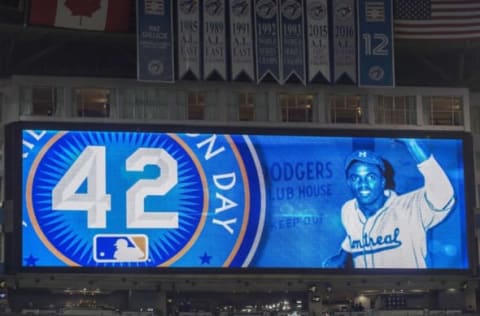
As most baseball fans know, April 15, 1947 is a special day in MLB history. It’s the day Jackie Robinson broke the color barrier in baseball and debuted for the Brooklyn Dodgers.
While the number he wore, number 42, has always been special and acknowledged throughout the Majors Leagues, especially since Jackie Robinson’s induction to the National Baseball Hall of Fame in 1962, the day has only been celebrated since 2004.
In 2004, Commissioner Bud Selig and Robinson’s daughter Sharon made the announcement that all 13 ballparks having games that day would have festivities to honor Robinson.
“I have often stated that baseball’s proudest moment and its most powerful social statement came on April 15, 1947 when Jackie Robinson first set foot on a Major League Baseball field”, said Selig. “On that day, Jackie brought down the color barrier and ushered in the era in which baseball became the true national pastime. Fifty years after that historic event, in April 1997, I was proud to join Rachel Robinson and President Bill Clinton at Shea Stadium to honor Jackie by retiring his uniform number 42 in perpetuity. By establishing April 15 as ‘Jackie Robinson Day’ throughout Major League Baseball, we are further ensuring that the incredible contributions and sacrifices he made — for baseball and society — will not be forgotten.
On the 60th anniversary of Robinson’s MLB debut, it was Ken Griffey Jr. who was the first player to wear the number 42 in his game that day, something he got permission to do from Commission Selig.
The sentiment grew to more players wearing number 42 each year and entire teams began to follow suit.
Today, all uniformed coaches, players and umpires all wear number 42 every year on April 15.
This year we are going to take a look at the top five players, other than Robinson, who once wore the number 42 either before the celebration began or who did at the time, and were grandfathered in and allowed to keep their number until their retirement from the game.
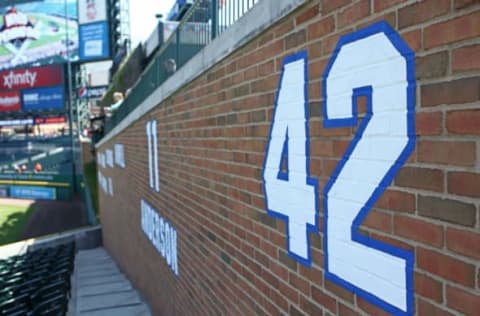
Ron Kittle is a former member of the Chicago White Sox, New York Yankees, Cleveland Indians and Baltimore Orioles.
He wore the number 42 during his three separate stints with the White Sox and also with the Orioles.
Kittle took home Rookie of the Year honors with the White Sox in 1983 and was also a member of the American League’s all-star team that season.
In 1983 Kittle had the best year of his career. He hit 35 balls out of the yard that season and coupled it with 100 RBI.
In the 1983 White Sox loss in the American League Championship Series to the Orioles, Kittle went 2-7, hitting .286 with a walk and two strikeouts.
Kittle maintained his power and was able to hit 111 home runs for the White Sox from 1982-1986. He was traded to the Yankees that season and hit four more long balls.
Unfortunately for the left fielder, designated hitter and later first baseman, Kittle’s batting average continued to drop while his strikeout numbers increased.
He returned to Chicago to finish his ten-year career there with a career batting average of .239.
Kittle later became a well-known manager for the non-affiliated minor league Schaumburg Flyers of the Northern League. He retired from the job in 2001.
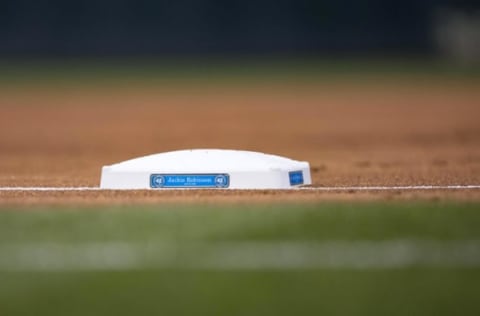
Dave Henderson began his career with the Seattle Mariners and spend the majority of his career with the Oakland Athletics. He wore number 42 in all but two seasons of his career.
He spent part of a season with the San Francisco Giants and one with the Kansas City Royals as well. However, he is probably best remembered for his two partial seasons with the Boston Red Sox.
In 1986 he was traded from the Mariners to the Red Sox, mostly to back up Red Sox centerfielder Tony Armas. He was usually a late-inning defensive replacement for Armas or used as a pinch hitter.
The Red Sox went on to face the then California Angels in the 1986 American League Championship Series. Down three games to one, things were not looking good for the Red Sox. Tony Armas sprained his ankle and was replaced by Henderson.
With the Red Sox leading 2-1 in the sixth, the Angels’ Bobby Grich hit a two-run homer to center that deflected off of Henderson’s glove and gave the Angels the lead, which they added on to in their half of the seventh-inning.
Then in the top of the ninth Henderson hit a two-out, two-strike home run off of Angels’ reliever Donnie Moore. The home run was so incredibly unexpected that it caused broadcaster Al Michaels to say,
“You’re looking at one for the ages here.
And everyone was. The Red Sox famously went on to lose the World Series to the New York Mets but Henderson’s home run is still remembered by fans everywhere.
Henderson’s best years however came with the Oakland A’s. Between 1988 and 1993, Henderson hit 83 home runs and drove in 283 runs as the A’s starting centerfielder.
He took home a World Series ring in 1989 when the Athletics swept the Giants in the Battle of the Bay and was an all-star for the first and only time in his career in 1991.
Henderson retired in 1994 after a season with the Royals in which he continued to wear number 42.
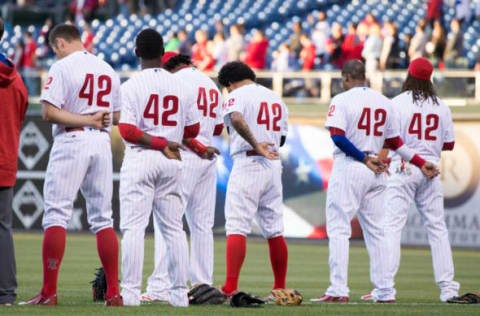
Mo Vaughn played his entire career wearing number 42.
He played from 1991 and retired in 2003. Vaughn spent most of his career with the Boston Red Sox but also spent two seasons with the then-Anaheim Angels and later the New York Mets.
In 1995 Vaughn led the American League in RBI with 126. He was named the American League’s Most Valuable Player that season. He also made the first of his three all-star game appearances.
Over his eight seasons with the Red Sox, Vaughn hit 230 home runs while driving in a total of 752. He batted .304 with a .936 OPS. All three of his all-star appearances came while playing in Boston with the Red Sox.
In his two seasons with the Angels, Vaughn hit 69 home runs while driving in a total of 225.
Injured during the 2001 season, he later signed with the Mets.
At age 34, still recovering from injury, Vaughn’s skills were not quite as sharp as they once had been. Still, he hit 26 home runs in 2002 and collected 72 RBI in 139 games.
He played in just 27 games during his final season accruing only 3 home runs and 15 RBI.
However, despite having a relatively short 12-year-career Vaughn finished with a lifetime batting average of .293 and a total of 328 home runs, making him one of the greatest players to ever wear the number 42.
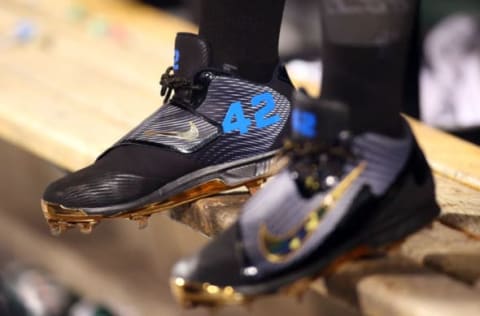
Bruce Sutter was a relief pitcher in the 1970’s and 1980’s, who played for the Chicago Cubs, St. Louis Cardinals and the Atlanta Braves, he also wore number 42 in all but his first two years with the Braves.
Sutter was arguably the first pitcher to effectively use the split-finger fastball.
He became the only pitcher to ever lead the National League in saves five times between 1979 and 1982 and again in 1984.
He made four all-star appearances from 1977-1981 with the Chicago Cubs, winning the National League Cy Young Award in 1979 when he led the National League in saves with 37.
Sutter became a member of the St. Louis Cardinals in 1981 and was named to his fifth straight National League all-star team.
In 1982 he took home a World Series Title as the Cardinals defeated the Milwaukee Brewers in seven games.
Sutter went 1-0 in the 1982 World Series finishing four games while collecting two saves, including the save of Game 7.
Sutter, a reliever and closer pitched over 100 innings five times in his career. That’s pretty incredible considering the number of innings relievers pitch today.
His abilities started to falter once he moved on to the Braves in 1985. He played three seasons for the Braves in 1985, 1986 and 1988, being injured during the 1987 season.
He posted ERAs over 4.00 in those last three seasons and retired after the 1988 season and 12 years in the majors.
Depsite his final few rough seasons, Sutter was one of the best. His career ERA was 2.83 and he pitched an astonishing 1,042.0 innings in his career.
Sutter was inducted into the Hall of Fame in 2006.
He is most definitely one of the greats to ever wear number 42.
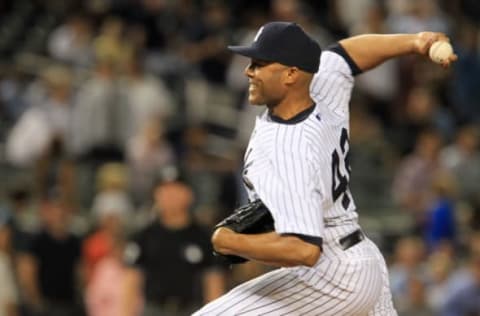
It should be no surprise that the best player to ever wear the number 42 is all-time saves leader and Yankee legend Mariano Rivera.
There is really no way to truly describe the greatness that is Mariano Rivera. He spent his entire 19-year-career with the New York Yankees from 1995 to 2013.
He was the team’s closer for 17 seasons and won more awards and big games that one can even imagine.
“Mo” or the “Sandman” as many people called him won five World Series Titles with the Yankees.
He was named the Rolaids Relief Pitcher four times. The name of that award is now the Mariano Rivera Relief Pitcher Award.
More from Call to the Pen
- Philadelphia Phillies, ready for a stretch run, bomb St. Louis Cardinals
- Philadelphia Phillies: The 4 players on the franchise’s Mount Rushmore
- Boston Red Sox fans should be upset over Mookie Betts’ comment
- Analyzing the Boston Red Sox trade for Dave Henderson and Spike Owen
- 2023 MLB postseason likely to have a strange look without Yankees, Red Sox, Cardinals
Mariano was named to an incredible 13 American League all-star teams in 19 years and won the game’s MVP one year.
He was named the MVP of the World Series in 1999 and the MVP of the American League Championship Series in 2003.
Rivera basically used one pitch to get hitters out, his unpredictable cut fastball that would practically drop off the face of the earth every time a hitter went to swing at it.
Nine times out of ten, if Rivera was pitching the ninth inning, the Yankees would end up victorious.
Only five players ever hit a walk-off home run against him and he is considered the greatest closer and relief pitcher of all time.
Rivera only retired in 2003 but his five-year wait to be on the Hall of Fame ballot is quickly approaching and there is no doubt that the former Yankee will be a first ballot Hall of Famer.
No one has yet compared to Rivera in excellence and the grace he should on the field, much like Jackie Robinson.
Next to Robinson, Rivera is by far the best player to ever don the number 42.
Next: Jackie Robinson Broke The Color Barrier But Did Not End Discrimination
Is Mariano Rivera the greatest Yankee of all time? But what about Babe Ruth? You decide.